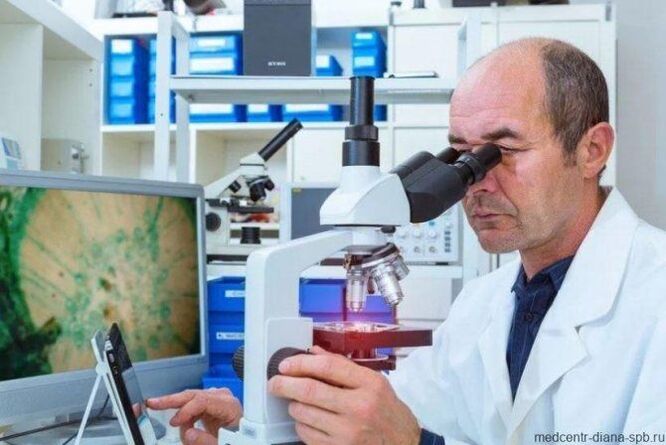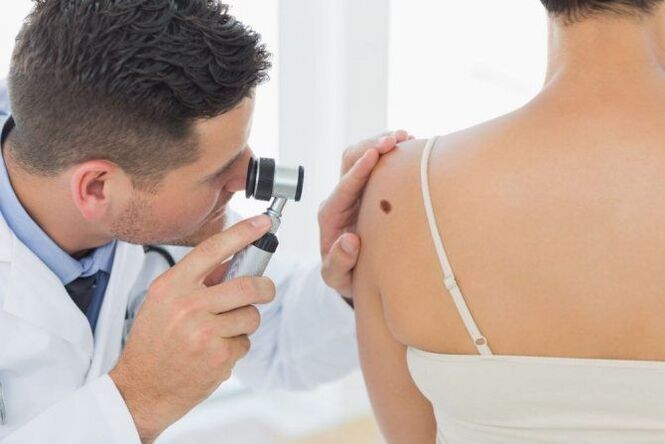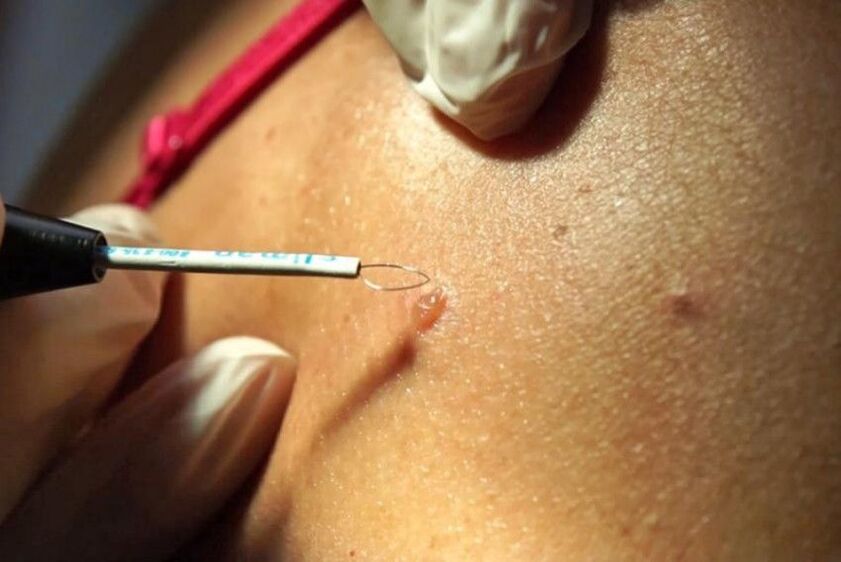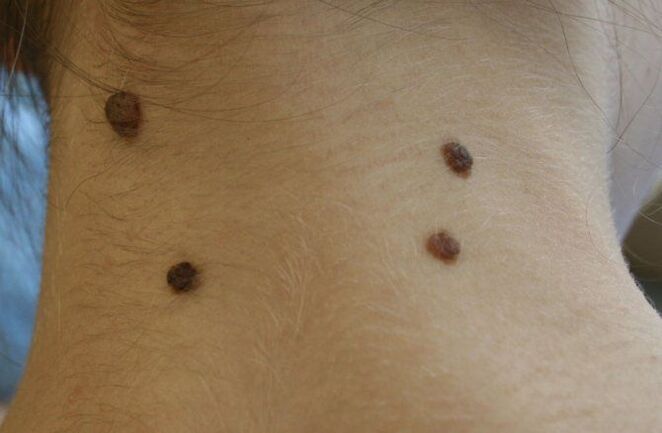Warts are skin growths in the form of nodules or papillae. This is the most common skin condition, found in over 90% of the world's population. Warts can appear in any person, at any age, on all areas of the skin, from the face to the feet. The disease is often contagious, it all depends on the person's immune system.

What causes warts
It is commonly believed that touching a frog causes warts to appear. It's an illusion. The causative agent of the disease, which causes the formation of warts, is human papillomavirus infection. According to statistics, this infection causes about 20% of all cancers.
The risk of HPV infection increases significantly:
- when using other people's personal hygiene articles and everyday objects;
- in public places (swimming pool, bathhouse, etc. ), especially when walking barefoot;
- in case of skin damage;
- with increased sweating of the hands and feet;
- in case of contact with an infected person (handshake, sexual contact, etc. );
- when walking in tight, uncomfortable shoes that cause friction on the skin of the foot;
- when using non-sterile instruments (in a beauty salon, etc. ).
Are warts always dangerous?
Most warts are completely harmless and can theoretically disappear in a few weeks or at most a month. In this case, patients are more likely to be concerned about a serious cosmetic defect, which causes psychological discomfort and interferes with leading a full lifestyle.
Warts are often painless unless they are on the soles of the feet or another part of the body that is subject to shock or constant contact. But there are cases of itching and discomfort in the affected area.
How to recognize warts: symptoms and signs
An inexperienced person may confuse warts with other skin growths, for example moles, calluses, melanomas.
The main differences between warts and moles:
- moles have a dark or black tint, while warts have a light color;
- warts grow tightly together with the skin, moles are separate structures, as if glued to the body;
- moles are soft and smooth to the touch, warts are hard, hard and rough.
It is also easy to distinguish a wart from a callus. When pressing on the growth, painful sensations will occur, and if it comes off, traces of hemorrhages will be visible under it. Under the callus is new, tender skin.
You can distinguish a wart from a melanoma by color and shape. This dangerous disease is characterized by heterogeneous red and black shades, proliferation and an uneven outline.
It is not difficult for a dermatologist to make the correct diagnosis using a visual examination. But a good specialist will not be satisfied with a simple inspection. He will definitely use a special magnifying device - a dermatoscope. If a pathogenic process is suspected, it will be necessary to scrape the surface layer.
In the case of anogenital warts (located around the anus and on the genitals), consultation with a gynecologist or proctologist is necessary.
What is the structure of benign neoplasms
The growths are made up of cells that have partially retained their original functions and are able to grow slowly. They are similar in structure to the tissues from which they originated. They can put pressure on nearby tissues, but not penetrate them, since they have a capsule in their structure. They respond well to hardware and surgical treatment and, as a rule, do not cause relapses.
There are always congenital formations on the skin: moles or warts, as well as acquired ones. The latter are formed on the surface or in the subcutaneous layer due to metabolic disorders, decreased immunity or under the influence of a virus.
Common warts (simple, vulgar).
Common warts are dense, dry growths characterized by an irregular surface that is rough to the touch, variable dimensions and a rounded shape. They look like a hard, keratinized bubble up to 1 cm in diameter, which rises significantly above the surface of the skin.
The surface of common warts is often covered with grooves and protrusions, which is why the new growth vaguely resembles a cauliflower or raspberry with black dots inside.
This is the most common type of wart and accounts for up to 70% of all these skin neoplasms. Simple warts can appear on the skin at any age, but most often affect children and young people. This is due to the fact that they have weaker immunity than adults.
Common warts usually appear on the hands (fingers and backs of the hands), knees and elbows, sometimes on the face or feet and extremely rarely on the mucous membrane of the mouth.
A handful of small growths may form next to the large "parent" wart. Young neoplasms usually remain flesh-colored, over time they acquire a dirty gray or grayish-brown tint, less often yellow or pinkish. This is due to their porous and irregular surface, on which dirt accumulates.
Vulgar warts usually do not cause concern: they do not cause unpleasant symptoms, they do not hurt or itch. However, they can cause pain if they are in areas subject to impacts or in contact with clothing. Growths may heal on their own over time, especially if they occur during childhood.
Why do benign formations appear on the skin?
Cosmetologists and dermatologists do not know the exact mechanism of their formation. Very often the cause is:
- injuries;
- virus;
- systemic diseases of the body, for example, xanthomas, occur due to excess fat in the blood;
- long-term skin diseases;
- exposure to aggressive substances;
- excessive exposure to ultraviolet radiation;
- X-ray;
- heredity (for example, seborrheic dermatosis).

Most skin lesions are benign
Plantar (pointed) warts.
Plantar warts are a type of vulgar wart. The manifestation of the disease is most often observed in children and at the age of 20-30 years. Of all skin warts, plantar warts occur in 30%.
Warts on the soles of the feet appear as hard, round lumps with papillae in the center. Characteristic black dots are visible inside the wart: many small thrombosed capillaries. Along the edges there is a small roll of keratinized skin. The visible part, which protrudes from the skin surface by only 1-2 mm, can reach 2 cm in diameter and represents only a quarter of the total size of the plantar wart, which mainly forms in the deep layers of the epithelium (skin).
Externally, the spine resembles a callus. A plantar wart can be differentiated (distinguished) from a callus by the visible disruption of the skin pattern in accordance with the wart.
This type of tumor usually affects the feet (soles, hips and toes) and less commonly the palms of the hands. They appear on the skin as small, whitish, pinpoint, sometimes itchy skin lesions. Over time, their surface becomes rougher and changes color, from yellow to dark brown.
Plantar warts themselves do not pose a threat to health, but when walking they cause a person considerable discomfort, cause pain, which often intensifies, and can even bleed. This is due to the location of the tumor and the specifics of its growth. As the spine grows inward, the weight of the body when walking compresses the pain receptors.
The incubation period of the disease varies from several days to several years. The infection enters the body and goes into waiting mode for a favorable environment to activate. Plantar warts regress without treatment in 50% of cases. But this process lasts from 8 months to a year and a half.
Without treatment, plantar warts will enlarge and multiply, to the point of producing large tumor clusters. This can also lead to temporary loss of ability to work due to unbearable pain that prevents walking.
Based on the characteristics of the lesion and its location, plantar warts are divided into 3 types:
- simple;
- periungual;
- mosaic.
Do benign formations hide the danger?
Benign neoplasms are unpredictable structures that can appear at any time or not at all. The process of their transformation into malignant ones has not been fully studied. There is no clear answer to the question of what exactly triggers this process. Mechanical trauma, excess ultraviolet radiation, metabolic disorders and other factors are believed to contribute to degeneration. One way or another, if you have a benign skin lesion, you should not experiment and rely on chance. Moreover, today the removal does not cause difficulties.
Periungual plantar warts
Periungual warts are small, rough formations with cracks on the surface, located on a person's hands and feet, especially near the nail plate or deep beneath it. Externally they resemble cauliflower heads.
They can be flat, pointed or hemispherical. Periungual warts are usually grey, but they can also be flesh-coloured. They are not too dense, like simple insoles, but have a fairly deep root.
This disease mainly affects children and young people. The main factor in contracting the infection is skin microtraumas around the nail. Those who bite their nails and pet stray animals are particularly at risk, as are people who carelessly remove cuticles, use undisinfected tools and work in water without gloves.
This type of tumor does not pose a threat to human health, it is mainly just a cosmetic defect. Plantar periungual warts do not cause discomfort or pain when pressed. However, a wart under the nail is not so harmless: over time, the neoplasm causes depletion of the nail plate and its further destruction.
In addition, various bacteria and viruses enter through cracks on the surface of the growths, which are easily formed due to frequent manual work, causing reinfection. Also, as warts grow, cracks can cause pain. The cuticle is often lost and a tendency to inflammation (paronychia) develops.
Removal of the tumor is necessary to stop the proliferation of the growths, which easily spread to healthy fingers. The localization of the wart under the nail plate makes treatment and removal very difficult. When it appears during childhood or adolescence, it may disappear on its own.
Where do warts come from? They are contagious!
Like herpes, warts are the result of a virus. More than one hundred types of viruses are responsible for the development of warts, most of which are HPV. Since there are oncogenic types of HPV, some formations can be particularly dangerous in terms of cancer, for example those that develop around the genitals.
No matter what the warts are or where they are located, never scratch, rub, or scratch them, as they can transmit millions of viruses to other areas of the skin where new growths may appear!
It is very easy to contract wart viruses. For example, infected human skin cells end up in swimming pool water. They swim in the water and easily find prey. The wart virus can also spread through direct physical contact, simply by shaking hands. The penetration of viruses into the body is facilitated by small lesions on the skin.
In children, warts often appear under the fingernails from sucking or chewing on the fingers, and can be painful and difficult to treat. Children can easily contract viruses while playing. As a result, one in four children has viral warts on their hands or feet.
Whether or not we get infected by the virus depends on how strong our immune system is. A strong immune system suppresses the infection that causes warts.
Mosaic plantar warts
Mosaic warts are a special type of neoplasm. They are plaques, so-called clusters, formed following the fusion of many small plantar warts tightly pressed together. The arrangement of the plaques resembles a mosaic (hence the name).
This formation is usually observed in a small, localized area. It can reach a diameter of approximately 6-7 cm. In the early stages of development, mosaic warts appear as small black pricks. As they develop they take on the appearance of a white, yellowish or light brown cauliflower, with dark spots in the center. These spots are formed due to thrombosis of blood vessels.
This type of wart is quite rare. They usually affect the hands or soles of the feet and are especially common under the toes. Unlike simple plantar warts, mosaic warts cause little to no pain when walking because they are flatter and more superficial.
Mosaic warts are highly contagious. They are difficult to treat due to the multiplicity of foci of viral infection. The success of treatment is facilitated by its timely start. As a rule, mosaic growths tend to recur even after surgical removal.
Benign and malignant skin tumors: what are the differences?
Benign pathologies do not pose a threat to human life. If they reach a large size, they can interfere with the proper functioning of various body systems. In contrast, malignant ones grow quickly and aggressively, penetrate surrounding tissues and over time form metastases. Some damage vital organs and cause death.
Sometimes benign skin tumors change due to external or hereditary causes. They acquire the ability to degenerate into malignant pathologies. Such conditions are called borderline or precancerous and represent a great danger to health and life, although they do not always have pronounced symptoms.
Flat warts (juvenile).
Flat warts are a fairly common and least problematic type of tumor. They present as small lenticular lesions (several mm in diameter) or smooth papular lesions. They can grow singly, which is quite rare, or in large numbers, close to each other.
There are different stages of the disease:
- mild – one or more painless warts;
- medium – 10 to 100 painless growths;
- severe – more than 100 tumors.
If they are located in places subject to excessive pressure (friction from clothing, shoes, etc. ), they cause pain.
Flat warts are easily identifiable and have a white, brown, yellowish or pink hue, similar to the color of flesh. They are about the size of a pinhead and, compared to other types of warts, are smoother and flatter. In fact, at the point where a flat wart develops, the skin rises slightly (up to a height of about 5 mm), forming a sort of circular raised area.
The growths typically appear on the face, knees, elbows, back, legs, and arms (especially on the fingers). People of any age become victims of this disease. But most often it affects children and adolescents (20% of schoolchildren have it), hence the second name of warts: juvenile.
In a small group of schoolchildren, 80% show resistance (resistance) to the virus. In adults, irritation and inflammation after shaving contribute to the proliferation of tumors.
The incubation period of the infection can last up to 8 months. In most cases the disease is just a cosmetic defect. Juvenile warts are painless unless caused by mechanical pressure or injury and can sometimes cause itching, but they are extremely contagious.
The virus is practically not transmitted through shared objects; the main route of infection is skin contact. Flat warts multiply so easily that touching a healthy part of the body is enough to cause the birth of a new formation.
The peculiarity of this type of wart is that in most cases no treatment is necessary: they can disappear as suddenly as they appeared, especially in children. In adults the disease must be treated and the virus is very resistant to drug treatment.
Transmission of warts by direct contact
Minor trauma or maceration leads to epithelial barrier dysfunction and subsequent loss of skin integrity, which paves the way for viral infection and wart formation. The incubation period varies from 3 weeks to 8 months after exposure. In most cases, spontaneous regression is observed.
Laser wart removal
Today, laser surgery is one of the best ways to eliminate warts. This is a painless and safe procedure that can be used in areas of maximum sensitivity. Laser removal of tumors is very effective: the probability of recurrence is minimal. This is significantly influenced by the severity of the disease.
Warts are removed by layer-by-layer cauterization of the affected area, thanks to which the doctor controls the depth of the effect. At the same time, the laser beam cauterizes the blood vessels, thus preventing bleeding at the site of exposure.
Three methods of laser coagulation are common:
- Carbon dioxide (CO2) laser. Procedures using this laser are more painful. Although the CO2 laser seals the blood vessels, it also kills the wart tissue. In this process there is the possibility of damage to healthy tissue. Wound healing usually takes longer and scarring is possible. The efficiency is around 70%.
- Erbium laser. It is characterized by a shorter wavelength. The likelihood of scars forming after healing is significantly reduced.
- Pulsed dye laser. This laser more effectively seals the blood vessels that feed the wart. It does not damage much healthy tissue like a CO2 laser does. It is also the only type of laser approved for use on children. The effectiveness of this treatment method is approximately 95%.
| Advantages | Cracking |
| Minimum probability of scar formation (depending on the degree of neglect of the pathology) | High price |
| Rapid tissue healing | |
| High efficiency of the method | |
| Minimal damage to healthy tissue | |
| Speed of the procedure |
Wart removal is performed under local anesthesia. At the cauterization site a crust remains, which disappears within 14 days. After the procedure, the patient quickly returns to his normal lifestyle, provided that all the doctor's recommendations are followed.
Treatment of filamentous papillomas
In 90% of cases, filamentous warts do not heal on their own (just as, for example, juvenile or vulgar warts in childhood can heal on their own).
They need to be looked after. Especially if these formations are injured.
For example, if the papilloma is on the neck, it can be injured by a chain or collar of clothing. If on the face - from glasses, under the breast - from a bra. You should be aware that such permanent damage can lead to inflammation of this formation and its pain.
Official methods and methods of treatment
Removing filamentous warts with a laser: Read a detailed article on laser removal.
The simplest, fastest and cheapest way to treat this type of papillomas. The doctor directs the laser beam onto the skin formation, which evaporates and burns it. You should first numb the skin with novocaine so that the patient does not feel pain. And he wears protective glasses over his eyes.
The entire procedure takes no more than 1 minute per wart. The consequences are a small scab on the wound. After 3-5 days, this crust peels off and healthy, clean skin forms in this place.
Removal by radio wave method: Read the article on radio wave surgery.
The principle of operation is as follows: a radio wave surgery device ("Surgitron") creates a high-frequency radio wave, which destroys wart tissue in the same way as a laser, that is, evaporates it.
The whole procedure is carried out in the same sequence as the laser treatment method: first (necessary! ) local anesthesia, then exposure for 1 - 2 minutes (it all depends on the size of the formation to be removed). The consequences of radio wave treatment are exactly the same as with laser.

Removal of filamentous papillomas with liquid nitrogen: read information about liquid nitrogen.
This method is popular because of its simplicity. It is not necessary to numb the skin with injections, nor is the presence of a doctor necessary. The procedure can be performed by any nurse or beauty clinic operator.
Operating principle: liquid nitrogen, at a temperature of minus 195 degrees, freezes the wart tissue. A doctor or nurse, dosing the effect on the skin over time, does not allow freezing in the adjacent healthy areas of the skin around the pathological formation.
Once the procedure is completed, in 90% of cases the papillomas will disappear on their own within 3-4 days.
Electrocoagulation of filamentous warts.
Nowadays, this method is used much less frequently, since it is a more traumatic method. Papillomas are removed using an electric knife. In this case, a burn and wound forms on the skin, which takes longer to heal.
Removal with a radio knife
The most effective modern method of eliminating warts is radio wave removal. This is primarily due to the fact that in this procedure the instruments do not come into contact with the patient's body: they are produced at the frequency of radio waves.
Other advantages of removing warts with radio waves should be noted:
- complete painless;
- speed of the procedure;
- exclusion of edema and infiltrations;
- absence of postoperative complications;
- absence of scars at the site of wart removal;
- short rehabilitation period.
The procedure is also performed under local anesthesia. After exposure, a crust forms on the affected skin area, which disappears on its own within 7-10 days.
Prevention of skin cancers
Unfortunately, medicine has not yet learned how to prevent the appearance of various formations on the skin. But dermatologists give their patients the following preventive recommendations:

- do not delay contacting a doctor if a tumor appears on the skin;
- remove formations only after a specialist and diagnostics confirm their benign nature;
- avoid excessive exposure to the open sun;
- use sunscreen, especially if you are prone to moles and hyperpigmentation;
- do not come into contact with chemically active and carcinogenic substances;
- do not eat foods that contribute to the development of cancer (smoked meats, sausages, animal fats, meat products with food stabilizers).
























